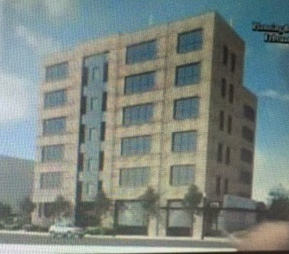New Castle Wrestles Over Downtown Chappaqua Work Financing
New Castle officials last Tuesday grappled with how they should pay for the planned downtown Chappaqua infrastructure and streetscape improvement projects without exceeding the tax cap and jeopardizing property taxpayers’ rebates.
The town board received an analysis from DPW Commissioner Gerry Moerschell regarding the scope of work and Comptroller Robert Deary on the various financing options for the roughly $10 million initiative.
Moerschell told officials that while the underground replacements of the water, sewer and drain lines are essential and will improve flooding conditions in downtown Chappaqua, it will not completely solve the problem.
“From a strictly public works function and infrastructure function, we need to replace the water, the sewer, the drain lines and we need to replace the roadway curb to curb,” Moerschell said. “Anything else that’s done is good and will beautify the community and is welcome. But we need to figure out how to do it cost-efficiently and how we can keep it under the tax cap.”
Staying beneath the tax cap is critical this year for the town because in order for property owners to receive their tax rebate for fiscal year 2016, the third and final year of the state’s tax freeze program. Capital projects count toward cap expenditures for municipalities.
Deary said that when a previous town board discussed the infrastructure and streetscape project about five or six years ago it was estimated to cost between $6 million and $6.5 million. However, town officials at the time postponed the work until a future date because downtown merchants were still reeling from the upheaval caused by the Route 120 bridge replacement project.
The latest estimates submitted two weeks ago by WSP Sells, the town’s consultant, listed water system improvement costs at $1,215,700, sanitary sewer system work at $1,469,800 and the drainage work at $1,140,600.
The curb-to-curb roadway improvements have been pegged at just over $2.5 million while the streetscape and lighting upgrades are projected at $2,463,400. Factor in another $410,000 for field change improvements and it pushes the estimate to $9,212,300.
However, WSP Sells neglected to include another $1.5 million for a full-time engineering inspector that will help keep the projected 18-month timeframe for the work on schedule. Moerschell urged the town to make the hire because of the expense, scope and potential impact on the hamlet.
“I’m extremely disappointed that the number wasn’t included before,” said Town Administrator Jill Shapiro. “Had we not asked we would not have known and we’re not in the position of being $1.5 million off on a project like this.”
With the extra expense and difficulty adhering to the cap, the town board appeared ready last week to scrap burial of the overhead utility lines, which would cost another $3 million to $5 million and add an additional year to the project.
Supervisor Robert Greenstein said officials learned that it wouldn’t even guarantee the downtown would maintain power in the event of a weather-related event.
Deary said he would recommend the town use $1.5 million from the town’s $6.6 million water fund balance and $1 million from the $5.4 million general fund balance to go toward the downtown work.
However, that would leave a large majority of the project to be bonded. For every $1 million borrowed, it is estimated it would cost New Castle $63,000 in debt service, Deary said.
“It’s about complying with the cap,” he said. “It’s not that (the tax rate) wouldn’t even be palatable, or based on the revenue that will probably come in in stages. It’s the fact that it’s not necessarily cap compliant.”
Another option is borrowing piecemeal, although the town risks having rising interest rates increase the project’s cost. Deary has conservatively projected a 2.75 percent interest rate.
Councilman Jeremy Saland recommended the town use the $1.5 million Chappaqua Crossing developer Summit/Greenfield has pledged toward the Chap Line, a mile-and-a-half walking path connecting the recently approved mixed-used development and downtown.
Language in the town’s approval does not limit that money to only be used for the Chap Line but other improvements that could help the existing business hamlets, he asserted.
“While the Chap Line may be a valuable addition to our town, to build this path and shoulder its future expenses when we face busting the tax cap to pay for an approximately $10 million infrastructure project is simply irresponsible,” Saland said.
Councilman Adam Brodsky, liaison to the Downtown Streetscape Committee, said the group has already been stripping away features. Exceeding the cap is an issue the board must debate.
“If the vanilla project is still going to get us over the cap, then we’re going to have some conversations as a board because if we’re over the cap, we’re over the cap,” Brodsky said.

Martin has more than 30 years experience covering local news in Westchester and Putnam counties, including a frequent focus on zoning and planning issues. He has been editor-in-chief of The Examiner since its inception in 2007. Read more from Martin’s editor-author bio here. Read Martin’s archived work here: https://www.theexaminernews.com/author/martin-wilbur2007/

